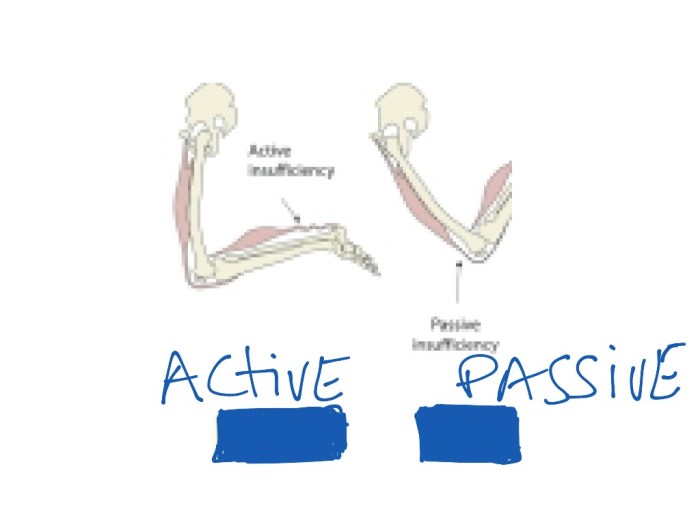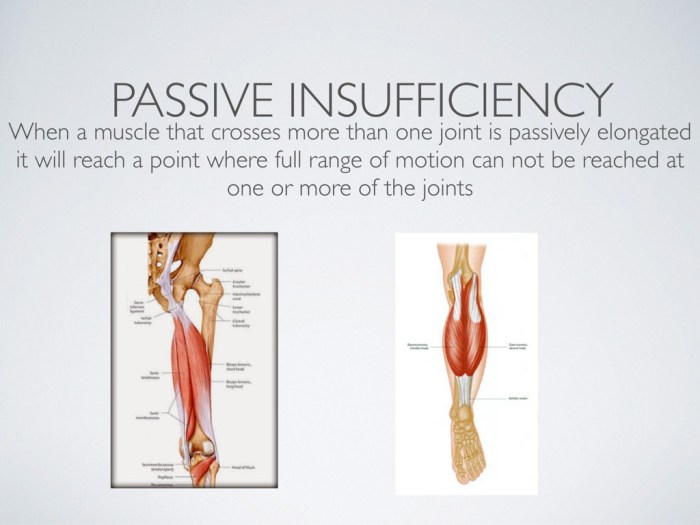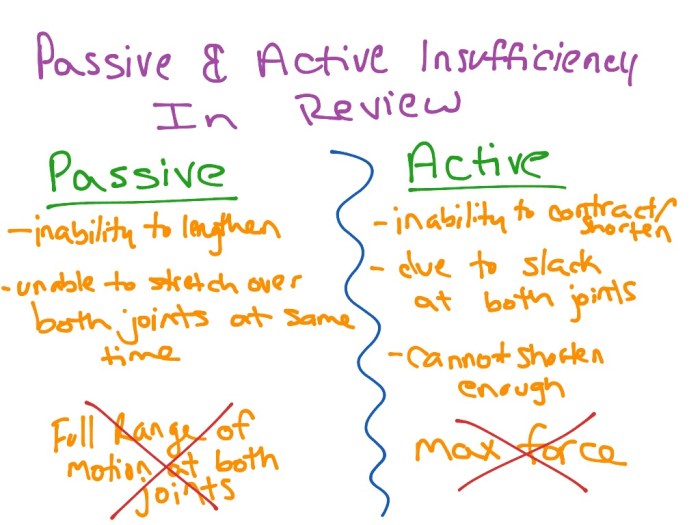Examples of active and passive insufficiency offer a lens through which we can explore the complexities of human behavior and its impact on individuals and organizations. This exploration delves into the underlying causes, potential consequences, and strategies for addressing these forms of insufficiency.
Active insufficiency arises when individuals or groups exhibit a lack of initiative or motivation, resulting in a failure to act or take responsibility. In contrast, passive insufficiency occurs when individuals or groups fail to respond adequately to external demands or expectations, leading to a lack of engagement or participation.
Active Insufficiency

Active insufficiency is a condition in which an individual or organization lacks the necessary resources, capabilities, or motivation to effectively perform a task or fulfill a responsibility. It is characterized by a failure to take appropriate action or make adequate effort, resulting in suboptimal outcomes.Examples
of active insufficiency include:
- A student who fails to study for an exam, resulting in a poor grade.
- An employee who misses deadlines and fails to meet expectations, leading to disciplinary action.
- A company that launches a product without conducting proper market research, resulting in low sales and financial losses.
Causes of Active Insufficiency
Active insufficiency can be caused by a variety of factors, including:
- Lack of knowledge or skills
- Poor planning or organization
- Insufficient resources
- Low motivation or engagement
- Distractions or interruptions
- Unclear goals or expectations
Consequences of Active Insufficiency
Active insufficiency can have significant consequences for individuals and organizations, including:
- Poor performance or productivity
- Missed opportunities
- Negative feedback or criticism
- Loss of trust or credibility
- Financial losses or damage to reputation
Examples of Passive Insufficiency

Passive insufficiency occurs when an individual or organization fails to take action or make an effort, even when they have the necessary resources and capabilities. It is characterized by a lack of initiative or motivation, leading to inaction or suboptimal results.Examples
of passive insufficiency include:
- A student who does not participate in class discussions or complete optional assignments.
- An employee who does not volunteer for new projects or take on additional responsibilities.
- A company that fails to innovate or adapt to changing market conditions, resulting in a loss of market share.
Causes of Passive Insufficiency

Passive insufficiency can be caused by a variety of factors, including:
- Lack of interest or motivation
- Fear of failure or rejection
- Lack of confidence or self-esteem
- Procrastination or avoidance
- Learned helplessness
Consequences of Passive Insufficiency: Examples Of Active And Passive Insufficiency
Passive insufficiency can have significant consequences for individuals and groups, including:
- Missed opportunities
- Poor performance or productivity
- Negative feedback or criticism
- Loss of respect or credibility
- Stagnation or decline
Essential FAQs
What are the key differences between active and passive insufficiency?
Active insufficiency involves a lack of initiative or motivation, while passive insufficiency involves a lack of engagement or participation in response to external demands or expectations.
What are some common causes of active insufficiency?
Common causes of active insufficiency include a lack of motivation, low self-esteem, and learned helplessness.
What are some potential consequences of passive insufficiency?
Passive insufficiency can lead to decreased productivity, missed deadlines, and a lack of engagement within teams or organizations.